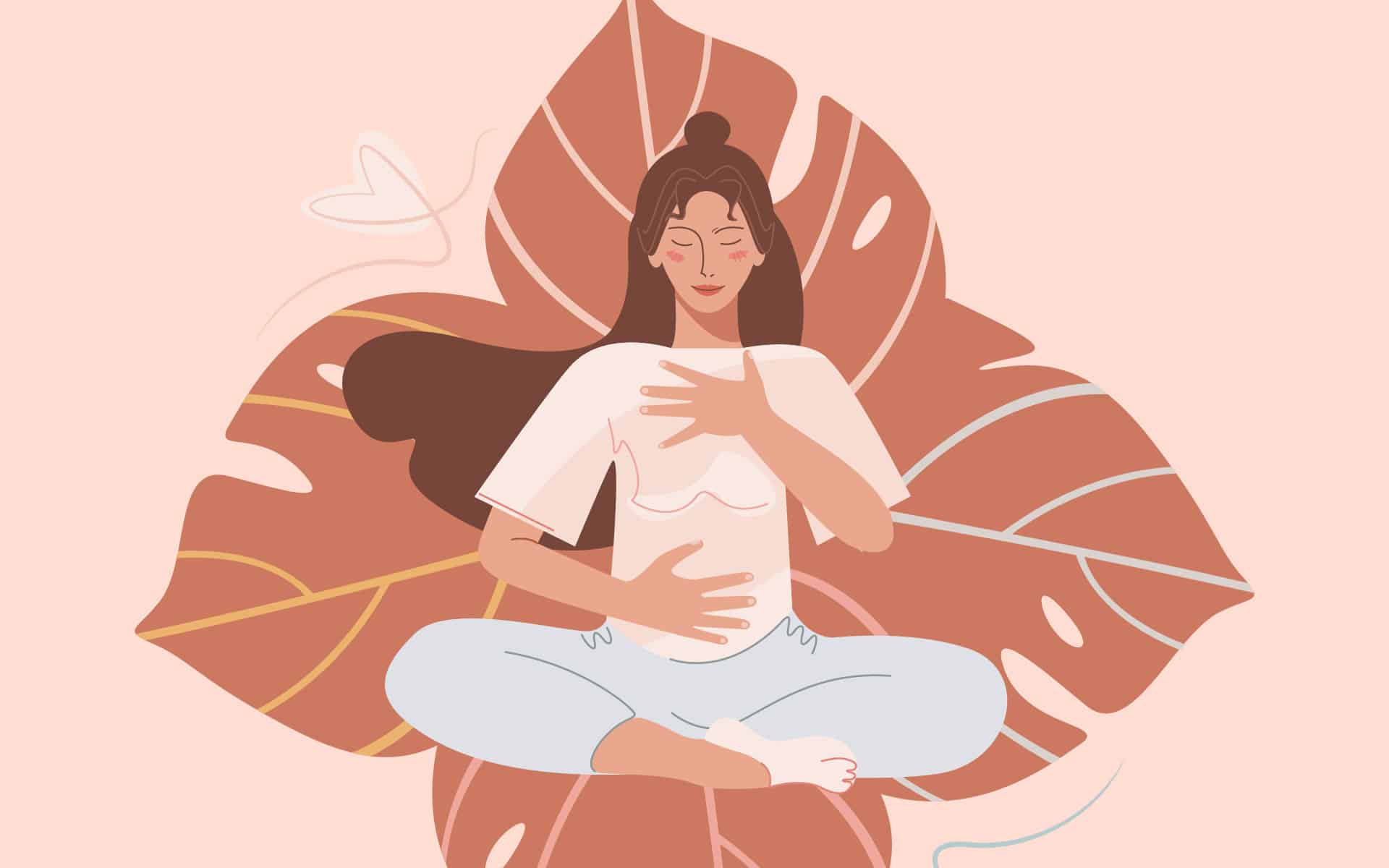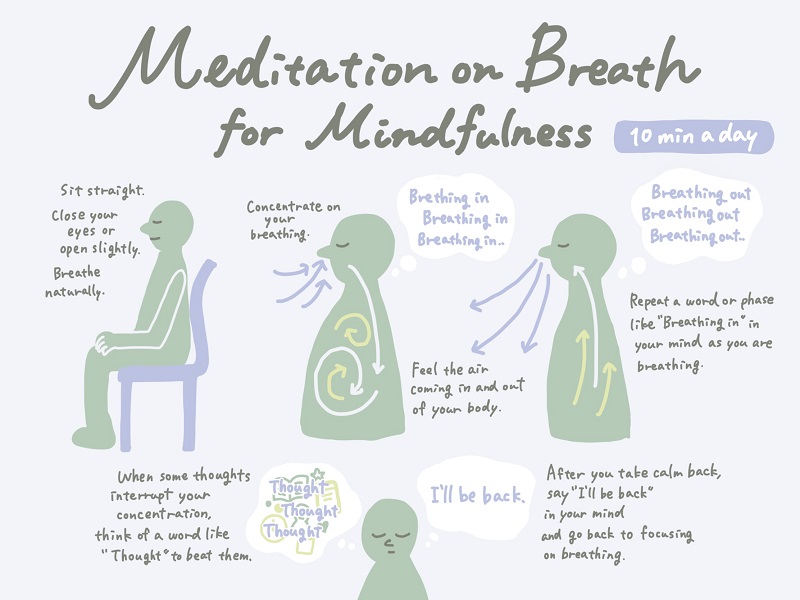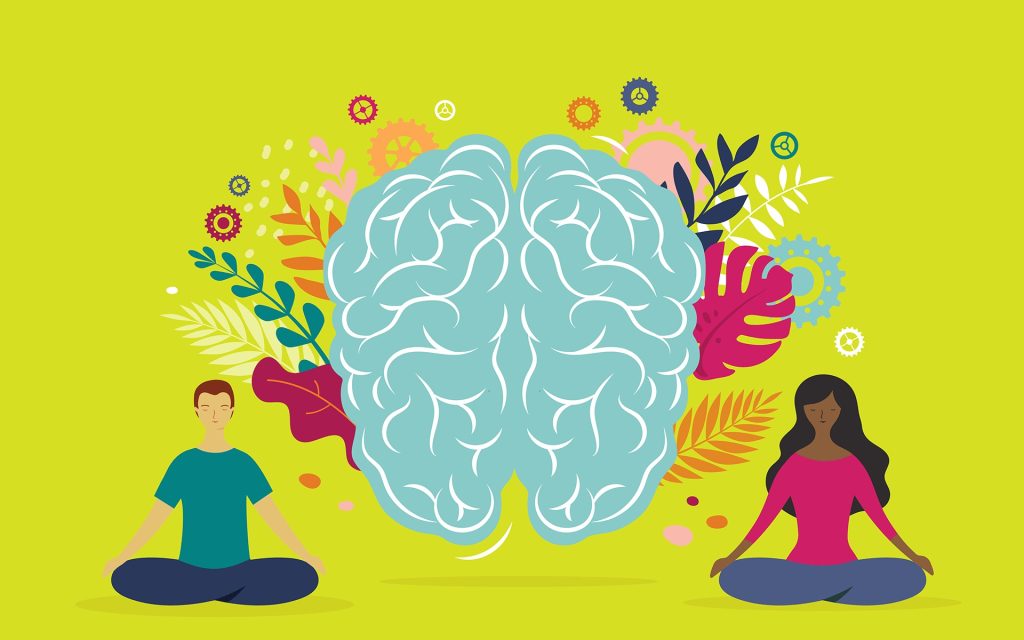Mindfulness breathing exercises offer a simple yet powerful way to reduce stress, calm your mind, and reconnect with the present moment. These techniques are a core component of what is mindfulness and involve paying gentle attention to your breath while using specific breathing patterns to activate your body’s natural relaxation response. Whether you have 30 seconds or 30 minutes, mindfulness breathing exercises can help you lower blood pressure, improve focus, and manage anxiety without any equipment or special training.
What Are Mindfulness Breathing Exercises?
At their heart, mindfulness breathing exercises are about bringing conscious awareness to the breath. Instead of breathing on autopilot, you intentionally notice the sensation of air entering and leaving your body. This simple act serves as an anchor to the present moment, pulling your mind away from worries about the past or future. It’s the connection between your breath and your nervous system that makes these exercises so effective at calming both the mind and body. You can do them anywhere—at your desk, in a waiting room, or before bed.
The Difference Between Mindful Breathing and Breathing Exercises
It’s helpful to know the slight difference here. Foundational mindful breathing is about simply observing your breath as it is, without trying to change it. You just watch it flow in and out. On the other hand, many breathing exercises incorporate gentle control, like counting your breaths or changing the length of your inhales and exhales. Both are valuable. Some days, just watching your breath is enough. Other days, a structured pattern can give your wandering mind something concrete to focus on.

How Mindfulness Breathing Exercises Work
So, what’s happening inside your body when you do this? When you breathe slowly and deeply, you activate your parasympathetic nervous system. Think of this as your body’s “rest and digest” mode. It’s the opposite of the “fight or flight” response that stress triggers.
This process heavily involves the vagus nerve, a major nerve that runs from your brain to your abdomen. Slow, intentional breathing stimulates this nerve, sending a signal to your brain that you are safe. In response, your brain tells your body to relax, slowing your heart rate, lowering your blood pressure, and easing muscle tension. This breath-mind connection is a direct pathway to influencing your physical and mental state.
Benefits of Mindfulness Breathing Exercises
You don’t just have to take my word for it. A growing body of research shows the real, measurable benefits of a regular breathing practice.
Reduces Stress and Anxiety
This is the big one for most people. Mindfulness breathing exercises are proven to lower levels of cortisol, the primary stress hormone. A 2024 study highlighted their effectiveness in improving cardiovascular health and preventing stress by helping to manage blood pressure. By calming your physiological stress response, you also calm your mind.
Improves Focus and Memory
Have you ever tried to focus when your mind is racing? It’s nearly impossible. By narrowing your attention to the simple sensation of your breath, you are actively training your brain’s concentration muscles. This stress reduction also directly benefits memory. When your brain isn’t overloaded with cortisol, it has more resources for cognitive tasks like retaining information.
Enhances Mood and Reduces Negative Thinking
A fascinating 2010 study found that mindfulness breathing was more effective than simple relaxation at reducing repetitive negative thoughts. These exercises help you create a small gap between a thought and your reaction to it. This space gives you the power to break free from cycles of rumination and regulate your emotional responses more effectively.

Better Sleep Quality
If you struggle with a racing mind at night, this is for you. Mindfulness breathing exercises calm your central nervous system, making the transition to sleep much smoother. Focusing on your breath gives your mind a quiet place to rest, instead of replaying the day’s events or worrying about tomorrow.
15 Simple Mindfulness Breathing Exercises You Can Try Today
Here is a list of techniques, starting with the most basic and moving to more involved practices. Find one or two that feel right for you and give them a try. There’s no pressure to master them all.
1. Basic Breath Awareness
This is the foundation. It’s the simple act of noticing. This simple observation is the heart of how to do mindfulness meditation.
- Find a comfortable position, either sitting or lying down.
- Close your eyes gently if it feels right.
- Bring your attention to your breath without trying to change it.
- Notice where you feel it most: the cool air at your nostrils, the rise and fall of your chest, or the expansion of your belly.
- Just rest your attention there. When your mind wanders, gently guide it back.
- Start with 3-5 minutes.
2. Diaphragmatic Breathing (Belly Breathing)
This technique encourages deep, restorative breathing that fully engages the diaphragm.
- Lie on your back or sit comfortably.
- Place one hand on your upper chest and the other on your belly.
- Breathe in slowly through your nose, focusing on letting your belly rise. The hand on your chest should remain relatively still.
- Exhale slowly through your mouth or nose, feeling your belly fall.
- Continue for 5-10 minutes. This is especially useful for deep relaxation.
3. Box Breathing (4-4-4-4 Technique)
A favorite of athletes and Navy SEALs for staying calm and focused under pressure.
- Exhale completely.
- Inhale slowly through your nose for a count of 4.
- Hold your breath for a count of 4.
- Exhale slowly through your mouth for a count of 4.
- Hold the exhale for a count of 4.
- Repeat the cycle for several minutes. If holding the breath feels uncomfortable, just make the hold shorter.
4. 4-7-8 Breathing
Developed by Dr. Andrew Weil, this technique is a powerful tool for relaxation and sleep.
- Exhale completely with a whoosh sound.
- Close your mouth and inhale quietly through your nose for a count of 4.
- Hold your breath for a count of 7.
- Exhale completely through your mouth, making another whoosh sound, for a count of 8.
- This is one breath. Repeat for 3 more cycles. Start slowly with this one.
5. Extended Exhale Breathing
The key here is making your exhale longer than your inhale, which is a direct way to activate your relaxation response.
- Inhale through your nose for a count of 4.
- Exhale slowly and gently through your nose or mouth for a count of 6 or 8.
- The exact count doesn’t matter as much as the ratio. Just ensure the out-breath is longer than the in-breath.
- This is excellent for moments of acute stress.
6. Alternate Nostril Breathing
This yogic practice, also known as Nadi Shodhana, is believed to balance the two hemispheres of the brain.
- Sit comfortably. Fold the index and middle fingers of your right hand into your palm.
- Close your right nostril with your thumb and inhale slowly through your left nostril.
- Close your left nostril with your ring finger, release your thumb, and exhale through your right nostril.
- Inhale through the right nostril.
- Close your right nostril, release your left, and exhale through the left.
- This completes one round. Continue for 3-5 minutes.

7. Counted Breath Meditation
This gives your mind a simple task to prevent it from wandering too far.
- Breathe naturally.
- As you exhale, mentally count “one.”
- On the next exhale, count “two.”
- Continue up to ten, then start over at one.
- If you lose count (which you will!), just gently start again from one without any judgment.
8. Body Scan Breathing
This practice connects your breath with physical sensations, helping to release hidden tension.
- Lie down comfortably.
- Bring your awareness to your breath for a few moments.
- Then, move your attention to the toes of your left foot. Notice any sensations there as you breathe.
- Slowly move your focus up your body—foot, ankle, calf, etc.—spending a few breaths on each area.
- Continue until you’ve scanned your entire body.
9. Visualization Breathing
Combine your breath with calming mental images to deepen the relaxation.
- As you breathe in, imagine you are inhaling calm, peaceful energy. You might visualize it as a soft, warm light.
- As you breathe out, imagine you are exhaling stress, tension, and negativity. You can see it as a dark smoke leaving your body.
- Repeat, letting the calm light fill more of your body with each inhale.
10. Affectionate Breathing
This is a self-compassion practice, drawing on the work of researcher Kristin Neff.
- Find a comfortable posture.
- As you breathe, simply notice the sensation of breathing with a sense of kindness.
- You might mentally say, “Breathing in, I am calm. Breathing out, I am at ease.”
- The goal is to infuse your awareness with a feeling of warmth and care for yourself.
11. Resonant Breathing (Coherent Breathing)
This involves breathing at a specific rate to maximize your heart rate variability (HRV), a sign of good health.
- Set a timer or use an app to guide you.
- The goal is a rate of 5-6 breaths per minute.
- Inhale for a count of 5, and exhale for a count of 5.
- Practice for 10-20 minutes for the full benefits.
12. Three-Part Breath (Dirga Pranayama)
This yogic breath uses your full lung capacity for a deeply relaxing and oxygenating effect.
- As you inhale, first fill your belly.
- Then, allow the breath to expand into your rib cage.
- Finally, draw it all the way up to your upper chest and collarbones.
- Exhale in reverse: from the chest, then the ribs, and finally, the belly.
13. Lion’s Breath
This one is less about quiet mindfulness and more about releasing tension. It can feel a little silly, but it’s very effective!
- Inhale deeply through your nose.
- Open your mouth wide, stick out your tongue toward your chin, and exhale forcefully with a “ha” sound.
- Repeat 2-3 times to release frustration or stagnant energy.
14. Walking Breathing Meditation
Take your practice on the move. This is a great way to practice mindfulness at work during a lunch break.
- As you walk, synchronize your breath with your steps.
- You might inhale for three steps and then exhale for three steps.
- Find a rhythm that feels natural.
- Pay attention to the feeling of your feet on the ground and your breath in your body.
15. One-Minute Breathing Reset
This is a perfect example of a three minute mindfulness practice you can use anytime. Proof that you don’t need a lot of time.
- Stop what you are doing.
- Set a mental intention to be present for just one minute.
- Take 3 to 5 slow, deep breaths.
- Focus completely on the sensation of the air moving in and out.
- That’s it. You can do this before a meeting, in a line, or anytime you feel overwhelmed.
How to Get Started with Mindfulness Breathing
Getting started is the easiest part. Don’t overthink it. Just begin.
- Start with 2-3 minutes. You don’t need to sit for 20 minutes on day one.
- Pick one technique. Choose the one that sounds most appealing and stick with it for a week.
- Use reminders. Set an alarm on your phone or put a sticky note on your computer.
- There is no “doing it wrong.” The practice is simply noticing your breath. When your mind wanders, you just gently bring it back. That is the practice.

Best Times to Practice
Consistency is more important than duration. Find a time that works for you.
- In the morning to set a calm tone for the day.
- During work breaks to reset your focus.
- Before a stressful event like a presentation or difficult conversation.
- Before bed to help you wind down.
Tips for Building a Consistent Practice
- Link it to a habit: Practice for two minutes after you brush your teeth or while your coffee brews.
- Use an app: Apps like Calm or Headspace can provide guided sessions.
- Be patient: Your mind will wander. That’s what minds do. Just keep coming back to the breath.
- Practice self-compassion: If you miss a day, don’t worry about it. Just start again the next.
Common Mistakes to Avoid
As you begin, it’s helpful to know about a few common bumps in the road.
- Forcing the breath: Your breath should be gentle and easy, not strained.
- Expecting instant results: Sometimes you’ll feel calm right away. Other times, you won’t. The benefits build over time.
- Getting frustrated with a wandering mind: This is the most common one. Remember, the goal isn’t to have an empty mind. The goal is to notice when it wanders and gently guide it back.
Who Can Benefit from Mindfulness Breathing Exercises?
Honestly, almost everyone. These exercises are accessible to adults, children, and seniors. They are a great starting point for anyone curious about meditation and incredibly helpful for people dealing with everyday stress and anxiety.
A quick note on safety: While generally very safe, if you have a history of respiratory conditions, panic disorder, or significant trauma, it’s wise to start slowly and consult with a healthcare provider. Always listen to your body and stop if you feel dizzy or agitated.
Frequently Asked Questions (FAQs)
How long should I practice mindfulness breathing exercises?
Beginners can see benefits from just 1-3 minutes a day. Consistency is more important than length. While 10-20 minutes can offer deeper effects, even 30 seconds of conscious breathing can reset your nervous system in a stressful moment.
Can mindfulness breathing exercises help with anxiety?
Yes, absolutely. They are very effective for anxiety. By activating your “rest and digest” system, they lower cortisol and slow your heart rate. Research from 2010 also shows they help interrupt the patterns of repetitive negative thinking that often fuel anxiety.
Should I breathe through my nose or mouth?
Breathing through your nose is generally recommended as it filters the air and can more effectively activate the parasympathetic nervous system. However, the most important thing is comfort. If breathing through your mouth feels more natural and relaxing, do that.
What if my mind keeps wandering during breathing exercises?
That’s completely normal! The point of the exercise isn’t to stop your mind from wandering—it’s to notice when it wanders. Each time you gently bring your attention back to your breath, you are strengthening your focus and mindfulness. It’s a feature, not a bug.
Can I practice mindfulness breathing exercises lying down?
Yes. Lying down is a great position, especially for practices aimed at relaxation or sleep, like the Body Scan or 4-7-8 breath. For focus, you might find that sitting upright helps you stay more alert.
How quickly will I see results from mindfulness breathing?
You might feel a sense of calm immediately during or after a session. Other benefits, like better emotional regulation, improved focus, and lasting resilience to stress, develop over weeks and months of consistent practice.
Are there any risks to mindfulness breathing exercises?
For most people, they are extremely safe. However, you should never force or strain your breath. If you have a serious respiratory condition, a history of panic attacks, or trauma, it’s best to start very gently and speak with a healthcare professional if you have any concerns.
I hope these exercises give you a simple, accessible tool to find a little more calm in your daily life. They’ve certainly helped me. For more thoughts on wellness and finding balance, feel free to explore more at www.notonetype.org.


You may also like this
Three Minute Mindfulness: Quick Practices to Ground Yourself Anywhere
Three minute mindfulness practices offer a practical way to stay grounded without needing extensive time...
Nov
Mindful Relationships: Building Deeper Connections Through Present Awareness
Have you ever been in a conversation with your partner, but your mind was a...
Nov
Mindfulness at Work: A Practical Guide to Reducing Stress and Boosting Productivity
Have you ever finished a workday feeling completely drained, like you were busy all day...
Nov
How to Do Mindfulness Meditation: Step-by-Step Guide for Beginners
Mindfulness meditation has been a complete game-changer for me. It’s a simple yet incredibly powerful...
Nov
How to Practice Mindfulness: 8 Simple Techniques for Beginners
It’s easy to feel like life is constantly running on autopilot. We rush from one...
Nov
What Is Mindfulness: Definition, Benefits, and How to Practice Daily
Mindfulness is the basic human ability to be fully present, aware of where you are...
Nov